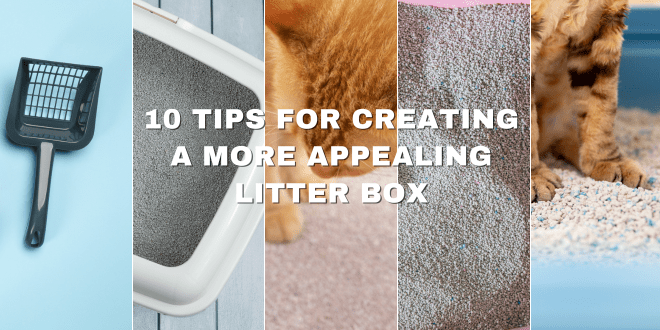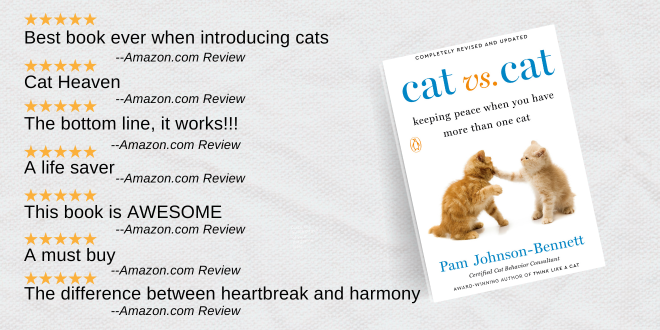
The litter box is a very important part of your cat’s life, yet we often don’t do our part when it comes to making sure the set-up is appropriate and the box is clean and appealing. Cleaning and maintaining the litter box may not be your favorite thing to do when it comes to being a cat parent, but it’s vital to your cat’s health, comfort and happiness. Here’s a list of quick 10 tips to help you maximize litter box appeal:
1. Right Type of Cat Litter
Typically cats prefer a soft, sandy litter. Soft, unscented or minimally scented scoopable litters generally fall into this category. Texture is important to cats and the feel of a soft substrate on their paws is generally more comfortable. Also, with a cat’s excellent sense of smell, the highly scented litters can be offensive. If you’re keeping the litter clean then you shouldn’t need to use a highly scented litter. Keep in mind how close your cat’s nose gets to the litter so imagine how offensive a litter with a strong perfumed scent must smell. If you aren’t sure which type of litter your cat would prefer, set out a few boxes with different options. Your cat will let you know if there’s a preference.
2. Don’t Cover the Litter Box
Use an uncovered box to allow for maximum comfort and to increase escape potential. Cats, especially in a multicat environment, need to feel they can easily escape from the box in order to prevent being ambushed by a companion cat. With a covered box there’s only one way in and out. Even in a household where the cats are friendly, it can only take one time of being suddenly surprised in the litter box to convince a cat that safer elimination places need to be found. When it comes to litter boxes, cat parents tend to think too much in terms of privacy but for a cat, privacy takes a back seat to safety.
3. Right Amount of Litter in the Box
Keep the litter level inside the box at about three inches. As you scoop soiled litter, top off the box to maintain a consistent level. Too little litter will result in urine pooling on the bottom of the box and creating a major odor problem.
4. Scoop the Litter Box Often
Scoop waste from the box at least twice a day. Nobody wants to use an unflushed toilet. It only takes a few seconds to check the box and scoop it. Frequent scooping also gives you the opportunity to check for potential health issues. For example, you may notice larger than usual urine clumps, or many blood in the urine, as well as changes in solid waste elimination.
5. Clean the Litter Box
Thoroughly dump used litter and completely scrub the box once or twice a month. If you’re not using a scoopable litter then the box will need to be scrubbed more often. Boxes with non-scoopable litter will need to be scrubbed at least once a week and have the litter totally changed out. If the box still smells after being thoroughly scrubbed then it’s time for a new one. Odor-causing bacteria can get trapped in lacerations in the plastic caused by the cat’s nails.
6. Right-Sized Box for Your Cat
The box should be the appropriate size for your cat. Don’t ask a large cat to squeeze into a small box. You shouldn’t pick a litter box because of how well it will fit wedged between the toilet and the tub or tucked inside a closet. The box size should be based on the size of your cat. As a general rule of thumb, the box should be one-and-a-half times the length of your cat from tip of the nose to base of the tail. If you can’t find a litter box that’s large enough, check at your local discount or home improvement store for a plastic storage container. Sterilite makes good ones that come in many sizes. If you get a tall box and cut a low entrance on one end to make it easier for your cat to go in and out.
7. Provide Enough Boxes for Cats
In multicat households, the litter boxes should outnumber your cats by at least one. Some cats don’t want to share the litter box. If you have an adequate number of boxes you can potentially ease tension.
8. Make it Convenient for Your Cat
Don’t place litter boxes all in one area. Scatter the boxes throughout the house so lower-ranking cats don’t have to pass a higher-ranking cat’s area and risk conflict. Pay attention to each cat’s need for personal space. Locate a box in the core preferred areas of each cat to avoid, or at least reduce guarding and stand-offs.
9. Place the Litter Box in The Right Location
Don’t locate the litter box near the cat’s feeding station. Cats don’t eat where they eliminate. This is a survival instinct that even the most pampered indoor cat still follows. Locate the box where it will be more comfortable and convenient for your cat. For example, you may want the box in the basement but it may not be comfortable for an older cat to go up and down the stairs. Keep your cat’s needs in mind.
10. No Liners in the Litter Box
Don’t use litter box liners. The cat’s nails can cause holes in them which will allow urine to leak between the liner and the plastic bottom of the litter box. This creates a major odor problem. Poorly fitting covers can also cause urine to pool in the folds. Many cats don’t like the liners because they get their nails caught on them and can’t dig or cover comfortably.
Need More Information?
For more specific help in creating the ideal litter box set-up or for help in dealing with litter box problems, refer to the best-selling books by Pam Johnson-Bennett. Pam’s books are available at bookstores and also online. We’ve included links to Amazon on our website.
If you have a question about your cat’s behavior or health, contact your veterinarian. This article is not intended as a medical diagnosis nor is it a replacement for your cat’s regular veterinary care. This article is for general information purposes only.





